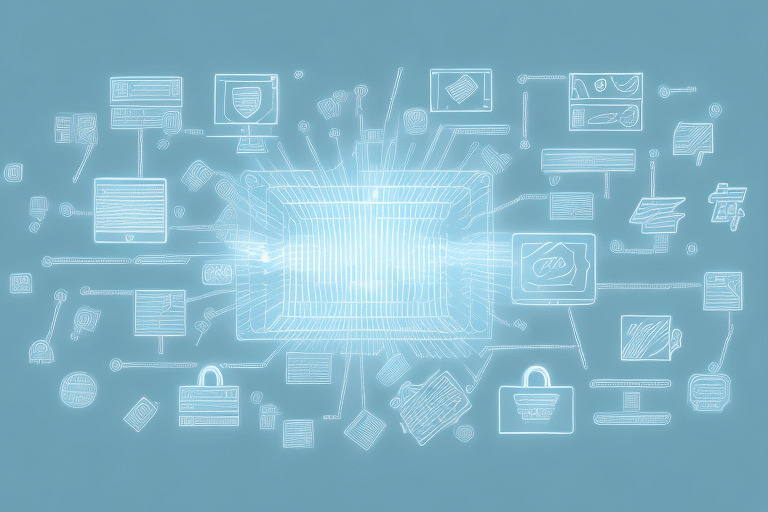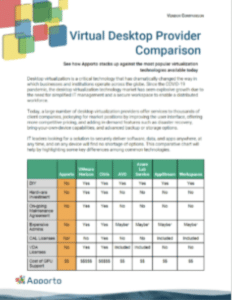Cyber Threats Facing Universities and Colleges: Strategies for Defense
In today’s digital age, universities and colleges face the same serious cybersecurity threats as any other organization. However, the unique nature of higher education institutions make them particularly vulnerable to cyber-attacks.
Understanding the Cyber Threat Landscape in Higher Education
Before delving into the strategies for defense, it is important to understand the various types of cyber threats that universities and colleges face. These can range from phishing attacks to DDoS (Distributed Denial of Service) attacks and even ransomware.
Types of Cyber Threats Targeting Universities and Colleges
Phishing is a common tactic used by cybercriminals to gain access to sensitive information, such as login credentials and financial information. Malware, in the form of viruses or trojans, can also be used to steal data or disrupt systems.
DDoS attacks involve overwhelming a system with traffic until it can no longer function, while ransomware targets and locks down critical data until a ransom is paid to the attacker.
Why Universities and Colleges are Attractive Targets for Cybercriminals
Higher education institutions are particularly attractive targets for cybercriminals due to the large amounts of valuable information they possess. This can include personal information of thousands of students, faculty, and staff, as well as research data and financial information.
In addition, universities and colleges often have outdated IT infrastructure and security measures, which makes them easier targets for cyber-attacks.
Recent Cyber Attacks on Higher Education Institutions
Recent years have seen a rise in cyber-attacks on universities and colleges. In 2019, the University of Maryland suffered a data breach that affected more than 300,000 students, faculty, and staff. The University of Texas also fell victim to a ransomware attack in the same year.
It is important to note that cyber-attacks on higher education institutions are not limited to large universities. Smaller colleges and community colleges are also at risk. In fact, smaller institutions may be at an even higher risk due to limited resources and funding for cybersecurity.
One way that cybercriminals target universities and colleges is through social engineering tactics. This involves tricking individuals into divulging sensitive information or clicking on a malicious link. For example, a cybercriminal may send an email that appears to be from a trusted source, such as the university’s IT department, asking the recipient to click on a link or provide login credentials.
Another factor that makes higher education institutions vulnerable to cyber-attacks is the use of personal devices on campus. With the rise of bring-your-own-device (BYOD) policies, students and faculty are using their personal laptops, tablets, and smartphones to access university systems and data. This can create security risks if these devices are not properly secured or if they are infected with malware.
In conclusion, universities and colleges face a wide range of cyber threats, from phishing attacks to DDoS attacks and ransomware. These institutions possess large amounts of valuable information, making them attractive targets for cybercriminals. Outdated IT infrastructure and security measures, social engineering tactics, and the use of personal devices on campus all contribute to the vulnerability of higher education institutions. It is crucial for these institutions to prioritize cybersecurity and implement effective strategies for defense.
Assessing the Vulnerabilities of Universities and Colleges
Given the serious nature of cyber threats facing higher education institutions, it is crucial to assess the vulnerabilities and potential risks involved. Higher education institutions are a prime target for cybercriminals due to the vast amounts of sensitive data they possess, including personal information, financial records, research data, and intellectual property.
While universities and colleges have made significant strides in improving their cybersecurity measures, there are still several vulnerabilities that need to be addressed.
Outdated IT Infrastructure and Security Measures
One major vulnerability that universities and colleges face is outdated IT infrastructure and security measures. Many institutions struggle to keep up with the latest hardware and software advancements, leaving them with outdated systems that are vulnerable to cyber-attacks.
In addition, many institutions have inadequate firewalls and antivirus software, leaving them vulnerable to malware and other types of cyber threats. Cybercriminals can easily exploit these vulnerabilities, leading to security breaches and data theft.
It is crucial for universities and colleges to invest in modern IT infrastructure and security measures to protect against cyber threats. This includes regular updates and patches, as well as comprehensive security protocols and training for staff and faculty.
The Challenge of Protecting Sensitive Research Data
Research data is often one of the most valuable assets that universities and colleges possess. However, protecting this data can pose a significant challenge.
Research data is often stored across multiple departments and systems, making it difficult to properly secure. In addition, researchers often require remote access to this data, which can increase the risk of unauthorized access.
It is crucial for universities and colleges to implement strict security protocols for research data. This includes limiting access to authorized personnel, encrypting data, and regularly monitoring for any suspicious activity.
The Risks Associated with a Large, Diverse User Base
Universities and colleges have a large and diverse user base, which can include students, faculty, staff, and other stakeholders. This can make it difficult to properly manage access and permissions, leading to security breaches.
It is also common for users to use unsecured devices and networks, which can increase the likelihood of data theft and other cyber-attacks.
It is crucial for universities and colleges to implement strict access controls and permissions for all users. This includes regularly reviewing and updating access permissions, as well as providing training for all users on proper security protocols.
Overall, universities and colleges must remain vigilant in their efforts to protect against cyber threats. By addressing these vulnerabilities and implementing comprehensive security measures, they can better protect their sensitive data and intellectual property.
Implementing Effective Cybersecurity Strategies
In recent years, cyber threats have become increasingly sophisticated, and higher education institutions are not immune to these attacks. Cybersecurity breaches can result in the loss of sensitive data, financial loss, and damage to the institution’s reputation. Therefore, it is crucial for universities and colleges to implement effective and comprehensive cybersecurity strategies to protect their IT infrastructure from cyber threats.
Developing a Comprehensive Cybersecurity Policy
A comprehensive cybersecurity policy is the cornerstone of any effective cybersecurity strategy. It should be developed with input from all stakeholders, including IT staff, faculty, and students. The policy should outline the roles and responsibilities of all stakeholders involved in securing the university or college’s IT infrastructure.
The policy should cover areas such as password management, access control, data protection, and incident response protocols. It should also include guidelines for the use of personal devices on the institution’s network and for remote access to the network.
Investing in Advanced Security Technologies and Infrastructure
Investing in advanced security technologies is essential for protecting the institution’s IT infrastructure from cyber threats. Firewalls, intrusion detection systems, and advanced encryption methods can significantly improve cybersecurity defense measures.
Updating IT infrastructure, such as replacing obsolete hardware and software, can also help prevent cyber-attacks. Outdated software and hardware can be vulnerable to cyber threats, and regular updates can help address these vulnerabilities.
Regular Security Audits and Vulnerability Assessments
Regular security audits and vulnerability assessments should be conducted to identify potential risks and vulnerabilities. This can help universities and colleges to proactively address these issues before a cyber-attack occurs.
These assessments should be conducted by trained professionals and should include penetration testing, which involves attempting to breach the institution’s network to identify vulnerabilities. The results of these assessments should be used to update the cybersecurity policy and improve the institution’s overall cybersecurity posture.
In conclusion, implementing effective cybersecurity strategies is essential for protecting higher education institutions from cyber threats. A comprehensive cybersecurity policy, investment in advanced security technologies, and regular security audits and vulnerability assessments are key components of a successful cybersecurity strategy. By taking these steps, universities and colleges can protect their IT infrastructure from cyber threats and ensure the safety and security of sensitive data.
Educating and Training Staff and Students on Cybersecurity
As the world becomes more interconnected and technology continues to advance, cybersecurity has become a pressing concern for universities and colleges. Cyber-attacks can compromise sensitive data, disrupt operations, and damage an institution’s reputation. Therefore, it is essential to educate and train staff and students on cybersecurity best practices to mitigate these risks.
The Importance of Cybersecurity Awareness Programs
Creating cybersecurity awareness programs can help to foster a culture of cybersecurity responsibility. These programs can include workshops, seminars, and training sessions for staff and students. By raising awareness of cybersecurity threats and best practices, users can become more vigilant and proactive in protecting themselves and the institution from cyber-attacks.
For instance, awareness programs can encourage users to regularly update their passwords, avoid clicking on suspicious links, and report any suspicious activity to the IT department. Additionally, users can be taught to recognize phishing scams and other social engineering tactics used by cybercriminals.
Incorporating Cybersecurity Training into the Curriculum
Given the increasing importance of cybersecurity, it is crucial to incorporate cybersecurity training into the curriculum, particularly for students studying IT-related subjects. This can help to raise awareness of cybersecurity threats and best practices among the next generation of IT professionals.
For example, students can be trained on how to conduct vulnerability assessments, perform penetration testing, and implement security controls. They can also be taught how to develop secure software applications and how to respond to security incidents.
Encouraging a Culture of Cybersecurity Responsibility
Ultimately, cybersecurity is everyone’s responsibility. Encouraging a culture of cybersecurity responsibility can help to mitigate the risks associated with cyber threats in universities and colleges.
One way to do this is by creating a cybersecurity policy that outlines the roles and responsibilities of staff and students in protecting the institution’s information assets. The policy should also specify the consequences of non-compliance with the policy.
Moreover, institutions can create a cybersecurity awareness campaign that emphasizes the importance of cybersecurity and encourages users to take ownership of their cybersecurity posture. This campaign can include posters, emails, and other communication channels that promote cybersecurity best practices.
By assessing vulnerabilities, implementing effective cybersecurity strategies, and educating users, higher education institutions can better protect themselves from cyber-attacks and safeguard sensitive data. Cybersecurity should be an ongoing priority for universities and colleges, as the threat landscape is constantly evolving.



